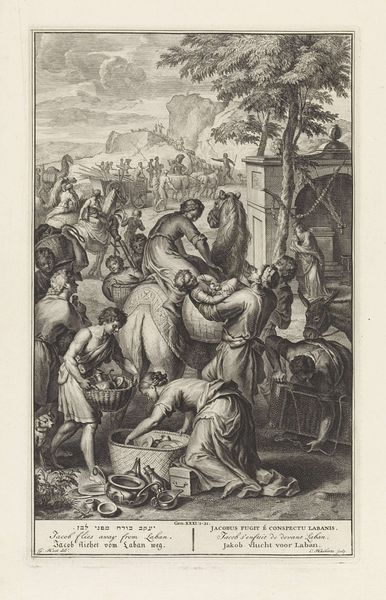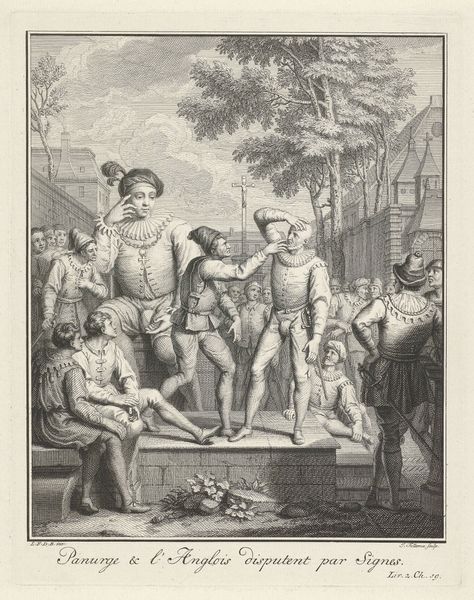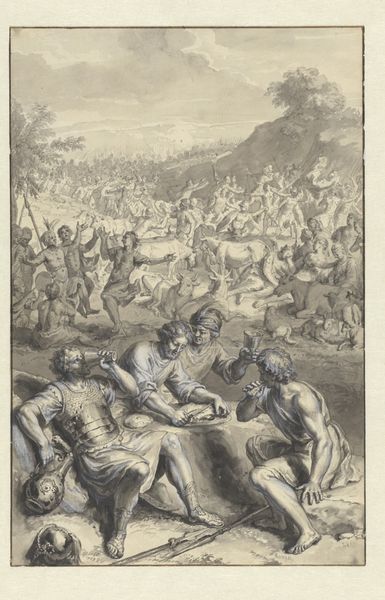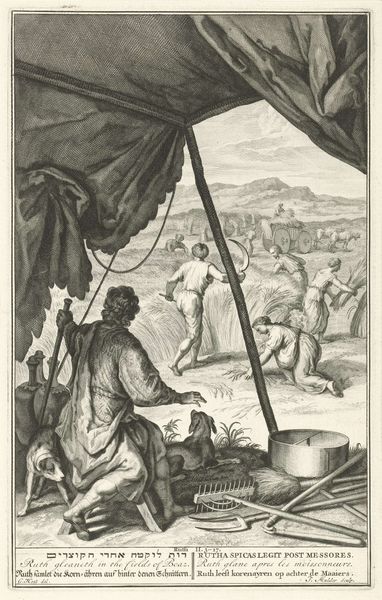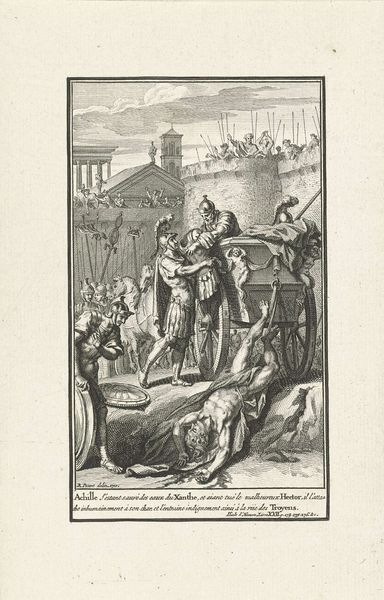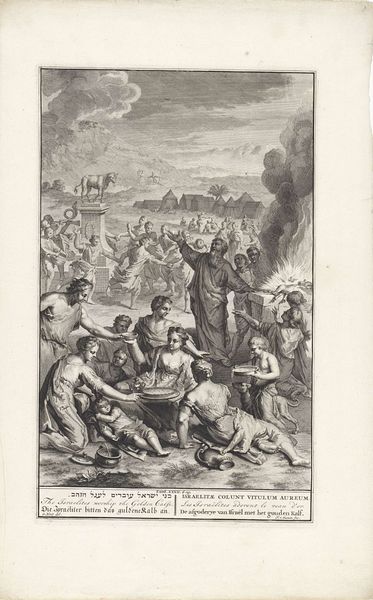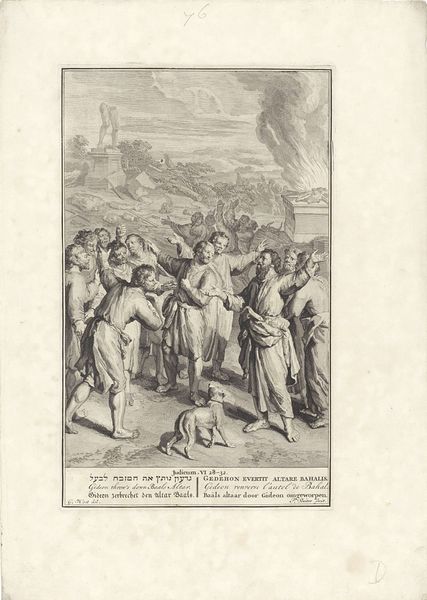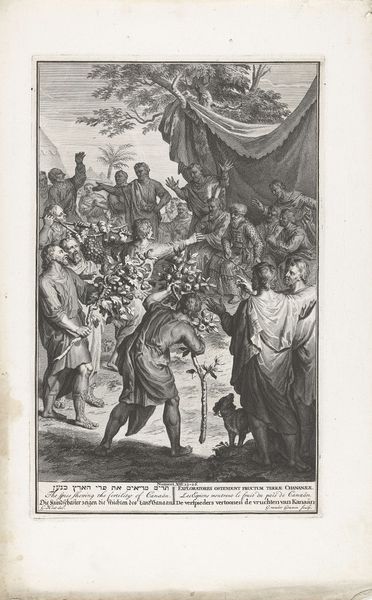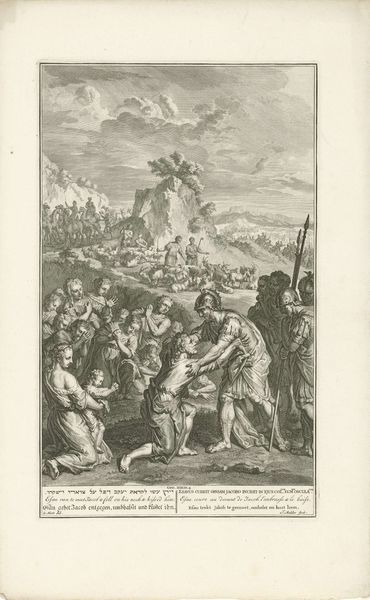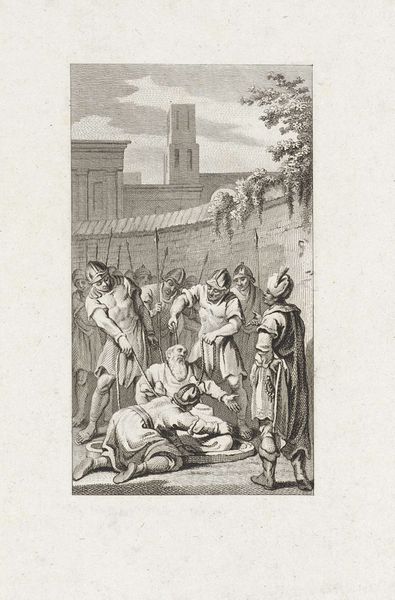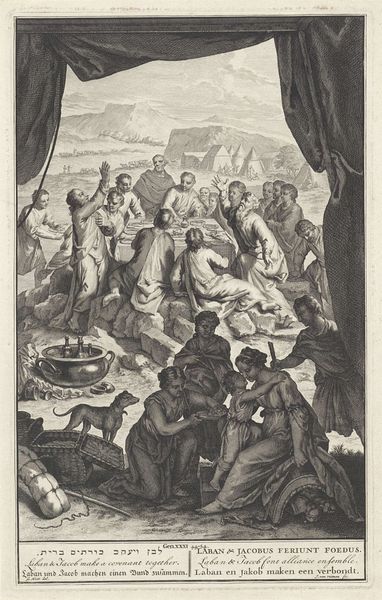
engraving
#
narrative-art
#
baroque
#
old engraving style
#
figuration
#
line
#
history-painting
#
engraving
Dimensions: height 355 mm, width 220 mm
Copyright: Rijks Museum: Open Domain
Curator: Here we have "Wangedrag van de zonen van Eli," or "The Scandalous Misdeeds of the Sons of Eli," an engraving dating from 1720-1728 by Joseph Mulder, residing here at the Rijksmuseum. The composition feels crowded, almost chaotic, with all the figures and activity depicted. There is certainly a stark, austere beauty to this narrative moment presented in an almost stark engraving style. Editor: Crowded, indeed! The detail in capturing the figures’ activities strikes me. Look at the labor being divided: tending the fire, butchering, cooking; this work exposes hierarchies and the material reality of the ritual being performed, perhaps sacrilegiously, considering the title. Curator: Semiotically, the visual layering invites interpretation. The figures’ gestures and expressions suggest a departure from established protocol, perhaps a corruption of ritual, if we consider Eli's sons' behavior and the textual message contained here. Editor: Precisely, and consider the physical processes required to create such an engraving. The labor, skill, and tools needed to translate an image into these crisp lines are astounding. The artist makes tangible their own critical lens. The scale reinforces a specific relationship to craft, commerce, and perhaps even criticism of societal issues in the print itself. Curator: Indeed. Mulder employs baroque sensibilities in this depiction of a specific biblical moment. One could analyze this via structuralism. The image functions as a constructed system where visual cues offer layers of encoded meaning. The artist’s strategic choice of lines creates spatial relationships—near versus far, light versus shadow—that serve to guide the viewer through this densely populated narrative. Editor: I can only imagine the smell from the sacrificial fire rising, permeating the air, as perceived by those participating, even unwillingly. To think that the raw materials needed to both enable, sustain and corrupt practices represented here must have had real ramifications on both society and the individual is critical. How we consider this consumption today informs how we can learn from our past and potentially transform our present. Curator: Thinking about how to decode images is a critical consideration that always leaves the possibility open for new viewpoints, not unlike how our Materialist perspective shows how meaning is both inherent and applied through making. Editor: And yet, what begins as narrative quickly opens to considering both tangible and metaphorical issues central to living responsibly in one's time.
Comments
No comments
Be the first to comment and join the conversation on the ultimate creative platform.
